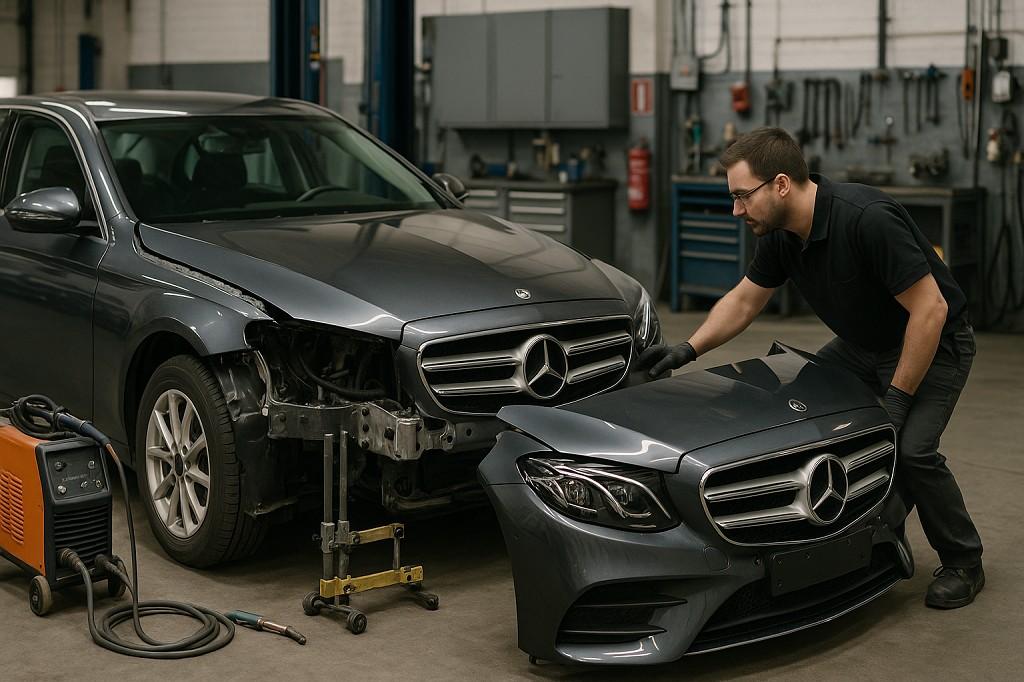
What is a nose cut? Quick Overview
A nose cut in automotive repair refers to the complete front-end section of a car, including the bumper, headlights, grille, radiator support, and sometimes the fenders. Best for: cost-effective front-end collision repairs, part replacements, and upgrading a vehicle’s front appearance without buying each part separately.
Understanding the Nose Cut
In the world of automotive repair, the term nose cut may sound odd if you’re not in the know. But if your car has ever been in a front-end accident or you’re restoring a vehicle, you’ll soon realize it’s a term worth understanding.
A nose cut is essentially the front portion of a vehicle that has been cleanly removed and sold as a unit. It’s a favorite among mechanics and car enthusiasts because it offers a convenient way to fix or upgrade the front of a used car without sourcing every part individually.
Let’s dig deeper into what exactly makes up a nose cut, when it’s used, and how to choose the right one for your vehicle.
What Does a Nose Cut Include?
A standard nose cut includes the full front assembly of a car. This may vary depending on the vehicle make and model, but generally, a nose cut will feature the bumper, headlights, radiator support, grille, and sometimes parts of the fenders and bonnet. You may even get cooling fans and the condenser attached if you’re lucky.
What makes the nose cut special is that it comes as one solid piece. That’s convenient, especially when you’re dealing with accident damage. Instead of buying a bumper here and a headlight there, a nose cut gives you everything in one go, often saving time, money, and labor.
Why Do Mechanics Love Nose Cuts?
The reason nose cuts are so popular in auto repair is simple: efficiency. When a car’s front end is damaged, repairing it piece by piece can be expensive. Some parts may be hard to find or not available at all locally. But a nose cut, usually sourced from a dismantled car overseas, solves all of that in one package.
It’s also a smart way to replace cosmetic damage. If you want to give your vehicle a facelift without doing a full body kit conversion, a nose cut can provide a fresh look with minimal effort. This makes it a go-to solution for both professional body shops and DIY enthusiasts.
When Do You Need a Nose Cut?
You’ll likely need a nose cut after a front-end collision, especially if the damage affects structural elements. While minor fender benders might only require a bumper or a headlight, a more serious impact often bends or breaks mounts, grilles, and the radiator support. At that point, a nose cut isn’t just an option—it becomes the smartest fix.
Restoration projects also benefit from nose cuts. If you’re bringing an older car back to life or converting it to a newer front-end look, a nose cut delivers everything you need in one neatly packaged setup. It’s commonly used in sports car conversions and Japanese imports, particularly for popular models like the Subaru Impreza, Nissan Silvia, or Toyota Altezza.
Nose Cut vs Half Cut: What’s the Difference?
Many people confuse nose cuts with half cuts. Though both involve salvaged vehicle sections, they’re not the same. A nose cut includes only the front fascia—from the bumper to just before the dashboard. It doesn’t include the engine or transmission.
A half cut, on the other hand, includes the front half of the car—engine, transmission, dashboard, and sometimes even the front suspension. While a half cut is useful for full engine swaps or right-hand to left-hand conversions, the nose cut is ideal when the focus is strictly cosmetic or structural on the exterior.
So, if you’re just fixing the front bodywork, the nose cut is what you’re after. It’s less expensive, easier to handle, and often available in better condition since it’s not exposed to high engine heat or oil leaks.
Benefits of Using a Nose Cut in Repair
There are several reasons why a nose cut makes a lot of sense in automotive repair.
First, it’s cost-effective. Buying parts separately is not only time-consuming but also expensive. A complete front-end assembly means you don’t have to pay for every single clip, bolt, or bracket.
Second, it ensures compatibility. Since the parts in a nose cut were originally assembled together, you don’t have to worry about fitment issues. This is especially helpful with modern cars where even a slight misalignment can affect sensors and aerodynamic flow.
Lastly, it saves time. For workshops that charge by the hour, labor time matters. A nose cut installation is often faster than trying to align and fit various standalone parts.
Since the replacement section comes from an identical model, fitment and alignment are more precise. This reduces the risk of mismatched body lines or uneven gaps. Additionally, a nose cut can be more cost-effective than sourcing and installing dozens of separate parts.
For older or rare vehicles, finding individual components can be challenging. A nose cut from a donor car ensures all necessary parts are included, making restoration faster and more reliable.
Potential Drawbacks of a Nose Cut
While a nose cut can be an excellent solution, it’s not without its challenges.
One concern is corrosion—if the donor section wasn’t properly stored or came from a humid climate, rust could develop over time. Another issue is paint matching; even with the same factory color, blending the new section seamlessly requires skill.
Additionally, improper welding can weaken the vehicle’s structure. Always choose an experienced technician who follows OEM guidelines for cutting and welding.
How a Nose Cut is Performed
The process of a nose cut involves precise measurements and skilled labor.
First, the damaged front end is carefully removed, typically along factory weld lines. The donor nose cut is then test-fitted to ensure proper alignment. Once confirmed, it’s welded into place, and critical areas like the frame rails are reinforced for safety.
Finally, bodywork and paint blending are done to make the repair invisible. A well-executed nose cut should look and function like the original factory build.
How to Choose the Right Nose Cut
When shopping for a nose cut, condition is everything. Because most nose cuts come from salvaged vehicles—often Japanese imports—you’ll need to inspect them for damage. Look out for cracks, rust, broken brackets, or bent radiator supports.
Paint condition also matters. If the color doesn’t match your car, you’ll need to respray it. This adds to your cost. Some suppliers offer nose cuts in excellent condition that match popular car colors, so take your time when choosing.
It’s also important to confirm compatibility. Even within the same model, nose cuts may vary depending on trim levels or model years. Always check the part number, or better yet, carry a sample or reference photo to your parts supplier.
Where Do Nose Cuts Come From?
Most nose cuts found in Kenya and other parts of Africa come from Japan, the UK, or Dubai. These are sourced from decommissioned cars—usually ones that are no longer roadworthy due to age, regulation, or insurance write-offs. The vehicles are dismantled, and the usable parts, like nose cuts, are exported to markets that need them.
The import process usually involves cutting the nose off the donor car, packing it safely, and shipping it via container. Once they arrive, local suppliers clean and display them for buyers.
Since these parts are second-hand, pricing can vary based on condition, rarity, and demand. Cars like Toyota Axio, Mazda Demio, or Nissan Note have nose cuts available in abundance, while those for luxury or performance models can be harder to find.
Cost of a Nose Cut: Is It Worth It?
Prices for a nose cut depend heavily on the vehicle model and the condition of the parts. In Kenya, for instance, a basic nose cut for a small car like a Toyota Vitz might cost between KSh 25,000 and KSh 50,000. Larger or premium models can go for KSh 80,000 to KSh 150,000 or more.
Is it worth it? For many people, absolutely. If your car’s front end is damaged and you try to replace each part individually, you’ll likely spend more—and still run into fitment issues. With a nose cut, everything works together right out of the box.
Can You Install a Nose Cut Yourself?
If you’re handy with tools and have some mechanical experience, installing a nose cut is doable. However, it does require basic knowledge of body alignment, cooling systems, and electrical wiring (for the headlights and sensors).
For best results, it’s advisable to let a professional handle the installation. A trained mechanic will ensure that the alignment is perfect, the wiring is correct, and the cooling system is leak-free. This prevents headaches later on, especially if your car uses modern driver-assist systems that rely on front-facing sensors.
Useful Tips When Buying a Nose Cut
Buying a nose cut isn’t something you rush into. Since it’s a large and vital part of your car’s exterior, the right choice makes all the difference.
Always inspect the piece in good lighting. Look closely for hidden cracks, rust, or previous repair marks. Feel around the edges and support beams—sometimes what looks perfect on the outside might have internal damage.
If possible, ask for a photo of the donor car before it was dismantled. This can help you confirm that the vehicle wasn’t in a front-end accident before the nose was cut off.
Check whether the cut comes with all mounting brackets and bolts. Missing hardware can delay installation or add hidden costs. It’s also wise to carry your mechanic with you when buying, especially if you’re unfamiliar with car parts.
Tips for a Successful Nose Cut Repair
If you’re considering a nose cut, follow these expert tips to ensure the best results.
Always source the donor section from a reputable supplier—preferably from a low-mileage vehicle with minimal rust. Verify that the nose cut includes all necessary brackets and mounting points for a seamless installation.
Hire a certified auto body shop with experience in nose cut repairs. Proper welding techniques are crucial for structural safety, so don’t cut corners. Finally, insist on high-quality paintwork to prevent color mismatch and premature fading.
Nose Cut and Insurance: What You Need to Know
If your car is insured and you’re replacing the front end after an accident, it’s essential to check if your insurer accepts second-hand or salvage parts. Some insurance companies will only approve brand-new OEM replacements, while others allow used parts like nose cuts as long as they’re in good condition.
Always document the process. Take before-and-after photos and request a receipt with part numbers. This will help you in case of future resale or insurance claims.
Final Thoughts: Is a Nose Cut the Right Solution for You?
If you’re facing front-end damage, want to upgrade your car’s look, or are restoring a used vehicle, a nose cut is an excellent solution. It simplifies the repair process, ensures proper fitment, and often costs much less than buying individual parts. When chosen carefully and installed correctly, it can bring your car back to life and keep it looking sharp.
The key is buying from a trusted source and ensuring the condition matches your expectations. Whether you’re a garage owner, a DIY mechanic, or just someone trying to save on car repairs, understanding how nose cuts work gives you an edge in the world of smart automotive repairs.
